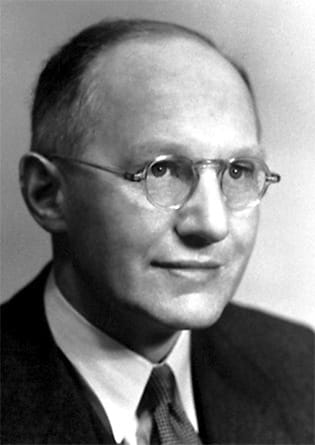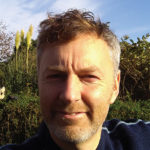
I have a love-hate relationship with historical movies. If you’re into historical material, of course you’ll be enticed to go see one. But so many historical movies have led to misleading facts and wrongful portrayals, like the much-loved Micheal Collins movie; with its 1970s-style IRA car bombs going off in 1920s Dublin and ensuring that a generation grew up thinking Dev ordered the hit on Collins at Béal na Bláth. With movies such an easy and wide-ranging medium, compared to heavy reads, it can be difficult to disentangle truths from fantasy when historical movies hit the screens.
Even allowing for some Hollywood dazzle, the Oppenheimer movie that chartered the secretive Manhattan project and the race to create the world’s first atomic bomb was riveting and accurate material. At three hours duration, I wondered whether it was going to be a tough viewing, but it flew by. Director Christopher Nolan successfully walked a tightrope of knitting atomic cinematography, scientific but accessible conversation and historical accuracy, to keep viewers glued to the screen.
The dropping of the Atomic Bomb on Nagasaki and Hiroshima are regrettably two of the most enduring moments of history. They remain to this day a stark reminder of how easy it is for humanity to be wiped out by weapons of mass destruction, something Putin troubling has threatened us with in the Ukraine-Russian war. This premise of the movie is based on who could literally make the first Atomic Bomb – the Nazis or the USA. It’s based around two key figures: an energetic and determined general by the name of Groves and a brilliant scientist who had embraced the emerging science of quantum and nuclear physics – Robert Oppenheimer (brilliantly player by the diverse and talented Cillian Murphy). There is no spoiler alert if you intend to watch it, as we know the Americans won the race and Japan became a grotesque testing ground, much to the scientist’s disgust. But what you will learn about is how they ran the Manhattan project, the array of great scientists and thinkers behind it, inspirationally led by Oppenheimer. He would be emblazoned over the cover of Time Magazine, 1948, and labelled, ‘Father of the Atomic Bomb’. Yet he was later discredited in the crazy paranoia of the 1950s when any left-thinking scientist, writer, actor or politician was dishonoured in the great McCarthy witch hunt, (named after senator McCarthy, who led the trials that were to rid America of the ‘red scare’ i.e sympathetic American communists – real or imagined). Yet the man who split the atom was an Irishman, and Trinity College Dublin graduate – Ernest Walton. Most people won’t have heard of him or what he achieved (in fairness working with a team of other scientists who I will come to) but it has led to the modern world we have today.
In fact, Oppenheimer and Walton were just part of a long line of scientists, each who broke new ground, each allowing the next scientist to push the boundaries of discovery to a new level. Never was Isaac Newton’s most famous quote so apt: “If I have seen further, it is by standing on the shoulders of giants”. Watching the movie got me curious about the evolution of atomic discovery and also the significance of it. I don’t think I’m being unfair to say most of us (outside students of and fans of physics) tend to associate the splitting of the atom simply as the key element behind creating a bomb. Yet the discovery of the atom and its many components has had an impact on all the modern gadgets and machinery we have at our disposal today. I don’t have enough knowledge about physics to get into the nitty-gritty (thank you Dave Pegler for fact-checking my science), nor is it something easy to explain, but I would like to take you on a leap from when another Trinity College professor, James Ussher, in the 17th century calculated that the world was only 6026 years old, to the 20th century when fellow Trinity man, Earnest Walton and others from that fruitful period 1890-1932, peering into the tiniest invisible, particles, atoms and elements, really saw how big the universe was and how old the earth had been in existence.
Even to this day, it’s hard to imagine how the scientists of the late 20th century made these wonderful discoveries, based on things we can’t see, with primitive self-made equipment, on which they performed their experiments, which proved their discoveries true. Indeed, that part is as amazing as the maths and physics.
Where to begin with such a massive topic? We know now that there are four forces of nature [as I write this, scientists believe there might be a fifth – but let’s not get ahead of them here!] – gravity discovered by the aforementioned Isaac Newton, electromagnetic forces that carry our phone, radio, television signals for example and the other two forces that are called ‘strong forces’ (that keep atoms together) and weak forces (that pull atoms apart). The scientists were not just merely discovering and simply categorising matter, protons, nuclei, neutrons, atoms; they were understanding and unlocking the impact these seemingly invisible natural things make and shape our world. They also allowed us to unlock the secrets of the past. Newton’s gravity force theory explained how we revolved around the sun and our interaction with our galaxy. In the late 20th century, there were the beginnings of electricity and magnetism which gave scientists an understanding of electromagnetism. A German scientist Rontgen, when working in his lab, came upon a reaction of light that gave an invisible ray that seemed to travel through objects. What he had stumbled across was what he dubbed X-Ray. (x often being used in maths to denote an unknown quantity). But what caused this was puzzling. It was the first step in understanding what the atom compromised of, because unbeknownst to him, electrons particles had been discovered, elements smaller than atoms. This is not just scientific lab talk – eventually understanding atoms and how they could be manipulated has led to X-Ray machines, CT Scans and 3D medical scanners, remote controls, sensors and most modern complex equipment.
Henry Becquerel and Marie Curie’s discover of radioactivity was also a massive step forward in splitting the atom, because radioactivity is the natural break down of so-called stable elements. It led others, like Cambridge Professor Ernest Rutherford, to understanding and discovering ‘particles’. Up until then scientists believed that chemical atoms were immutable, in other words could not be broken down until Curie’s and Becquerel’s work on radiation. A new question emerged – could atoms be broken down ‘artificial’? I suppose we also may ask, why bother? Well for a start because radiation changes an element’s form, it was the start of what Rutherford would call ‘radiometric dating’, which meant one could now date the age of matter, and show that professors Ussher’s date for how old our earth was, was based on a biblical fantasy timeline. But Rutherford and other came to understand that all matter which is made up of atoms were: ‘dense positively charged nucleus, surrounded by negatively charged electrons’, i.e even smaller components than the atom. Remember I mentioned four natural forces? Understanding the components of the atom allowed the scientist to come to grips with the other two forces of nature, i.e the strong force that keeps these elements together and the weak force (as in radiation) that breaks them apart. But could humans split an atom and what would happen if they could?
You need energy – light. In this journey, understanding cosmic rays, then learning how to manipulate them was the next step. In fact, key to splitting the atom was when scientists worked out, in theory and with mathematical modelling, that the energy emitted from cosmic rays could split the atom. Now imagine in the 1920s, with primitive equipment, and working with invisible forces [detected through ingenious ways such as cloud trails to identify atoms in cloud chambers] 24-year-old Ernest Walton, was invited to Cambridge to work with Rutherford and others. Together they had to put all their theories into practise. It was Walton’s ‘particle accelerator’ concept that did the trick. [Standing on the shoulders of giants and all the other steps that it took to get to this point]. They needed to build a machine that had yet to be invented or conceived. But now, with their understanding of light, energy, radiation, and the various components of an atom, they knew it was possible. The answer? They had to send particles through a high voltage, to push up the energy of those particles. That beam of energy [light can be particles and waves] had to then be smashed into a target [i.e an element. It turned out to be lithium after trial and error], but they then needed a detector system to see what they had done. It’s difficult to conceive this in 2023 with all we know, let alone back in 1932. Rutherford, Cockburn, Chadwick all were part of this experiment, but it was Walton, who in one of their many hundred experiments, on the morning of April 17, 1932, when working alone in the lab, ever-so-slightly making new adjustments to their previous experiments, became the first man in the world to split the atom. What Oppenheimer and the Manhattan Project team did a decade later, was to weaponise the splitting of the atom into a force so powerful it could destroy cities. On the eve of their discovery many of the scientists in the Manhattan project were to realise its implications and wanted the American government not to use it as a starting point but as an ending point to tell the world – look what we have done, we must go no further. Nuclear physics can give us energy – great amounts of it from splitting the atom. The American government wanted to do more than just that, and after Japan, we could never turn the clock back again.



